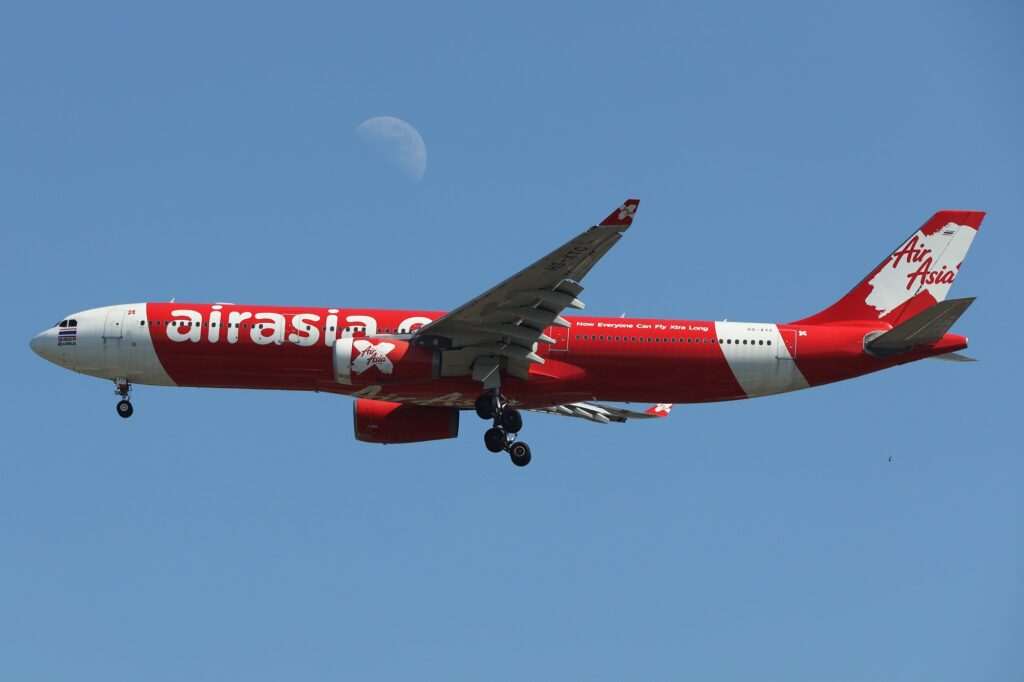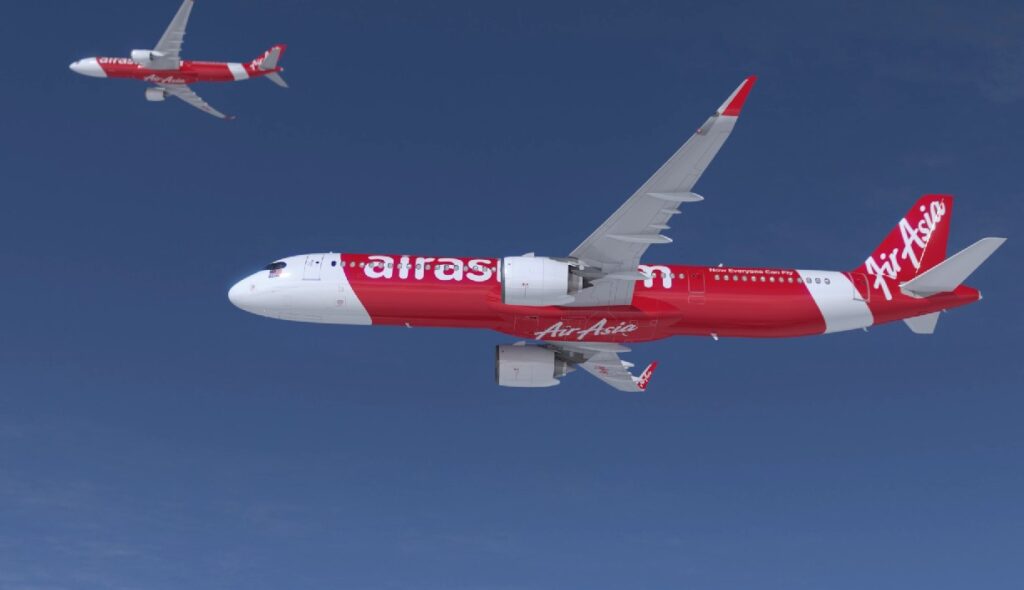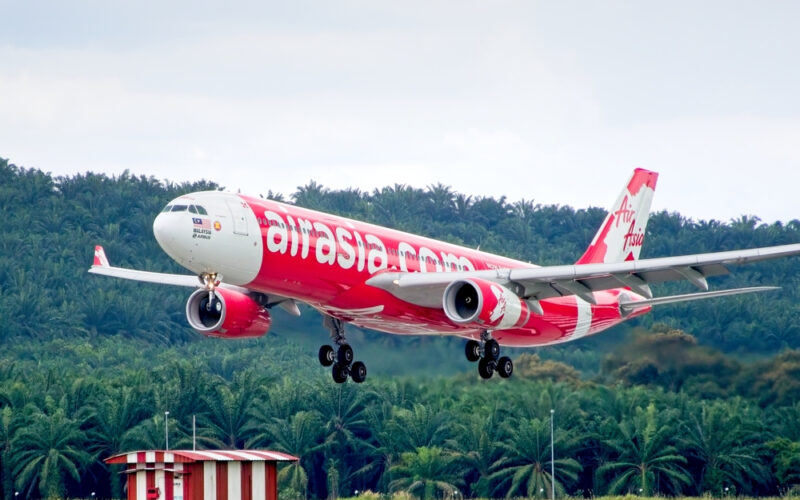AirAsia X has recorded a solid start to 2024, as reported in its financial results for the first quarter of 2024 (“1Q24”) which ended on March 31, 2024. Despite its network growth being restricted by a lack of available Airbus A330 aircraft, the budget carrier is positive about its future as it eagerly awaits the arrival of the first of the 20 A321XLRs it has on order.
The carrier reported revenues of RM908.9 million ($191m) in 1Q24, an increase of 66% year-on-year. This was attributed to a 90% surge in the number of passengers carried over the same period in 2023, to 959,623.
Driven by the strong demand arising from key holiday seasons in its markets plus school holidays, the company posted profits of RM80.1 million ($17m) net profit, representing a margin of over 8% against its revenue.
A solid passenger load factor of 83% was up three percentage points over 1Q23, with its best-performing routes in China, India, and Japan recording over 90%. Capacity (measured in Available Seat Kilometers (“ASKs”) increased by 74% over the same period in 2023, while capacity stood at 1,155,788 seats overall.
In terms of costs, the airline’s Cost per Available Seat Kilometer (“CASK”) in 1Q24 has reduced by 11% since the previous quarter and came in at 13.93 sen (US¢2.95), down from 15.71 sen (US¢3.35) in 4Q23. The carrier attributes this cost reduction to lower operating expenses including the easing of jet fuel prices and buoyed by the overall increase in capacity.
In 1Q24, ancillary revenue per passenger increased by 3% year-on-year to a record level of RM251 ($53m). The airline credits “new product offerings optimized for the markets, with personalization, platform, and booking flow enhancements” for this rise, bolstered by the introduction of new trending food and beverages offerings by renowned Malaysian restaurant chain SANTAN in collaboration with other popular catering businesses.

On the back of the airline’s desire for network growth and following the extension of the visa-exemption policy to China until 2025, AirAsia X increased flight frequencies on its most popular routes to China, including Chengdu, Beijing, and Shanghai, as well as ramping up flight frequencies to Bali in Indonesia. Overall, the Company delivered an 85% year-on-year increase in the number of sectors flown to 3,184, with the total average weekly number of flights for 1Q24 landing at 135 flights per week.
In terms of its Thai-based subsidiary, AirAsia X Thailand reported revenues of RM543.4 million ($114m), a year-on-year increase of 52% YoY, and a net profit of RM46.4 million ($9.3m). Operationally, the subsidiary’s passenger numbers rose by 51% year-on-year to 437,764 passengers, with an average load factor of 89%, an increase of one percentage point over 1Q23.
AirAsia X’s total fleet size remained at 18 A330s as of the end of March 2024, with 16 aircraft now activated and operational following much of the fleet being grounded during the pandemic. Meanwhile, the Thai AirAsia X total fleet size stood at seven A330s, with an additional aircraft reactivated during the quarter, bringing its fleet of activated and operational aircraft to six.
“We expect the two remaining aircraft to rejoin the operational fleet in July and November this year, while we work towards ensuring our fleet requirements for further growth in the future are secured,” said AirAsia X CEO Benyamin Ismail.
“At present, we welcome the recent announcement of the extension of the visa-exemption policy to China until 2025. Since the relaunch of routes to China, load factors to the country have been strong at about mid-90%, while the all-new Almaty route proved successful with over 90% load factor routinely trending since its launch,” he added.
Future growth plans
“Looking to the future, we are excited about the A321XLR aircraft on our order book, which will bring our growth ambitions to fruition, as it unlocks a range of up to nine hours with a reduced cost base compared to our current fleet,” commented Ismail.
“With its reduced capacity, the A321XLR gives greater flexibility for network planning and elevates even more second-tier pairing. This aircraft is expected to lower the break-even point for the airlines, ultimately boosting our margin. As it is, for 1Q24, our profit margin is robust at over 8%. On Fly-Thru, our connectivity stands at 22%, led by Australia and India, with synergies leveraged with the broader AirAsia Group more encouraging than ever,” Ismail added.

Ismail continued: “This paves the way for the Company’s strong future growth ambitions, ultimately leading to our ongoing engagement with Capital A Berhad (“Capital A”) for the proposed acquisition of Capital A’s aviation business (AirAsia), which is envisioned to establish an enlarged group of airlines with the ‘AirAsia’ brand as a global low-cost network carrier group, establishing elevated synergistic benefits through centralized decision-making and coordinated network plans.”
“In addition, the proposed acquisition provides all-important access to an order book with over 400 new specification aircraft deliveries that are currently under Capital A. This gives us unbounded expansion opportunities at a time when growth opportunities the world over are limited due to bottlenecks in the supply chain which have, in turn, delayed aircraft delivery for us,” he concluded.

